The history of tea drinking can be traced back over thousands of years.
According to a popular story in China the first tea drinker was Emperor Shennong, who was boiling some water one day when the wind chanced to blow some leaves into the pot.
Tasting the result, the Emperor was not only delighted with the flavour but felt invigorated too. The leaves were from the plant we know today as Camellia sinensis or tea plant.
Today there are lots of types of tea and many different ways of drinking it.
Teas range from white, yellow, green, oolong, black and Puerh.
Amazingly, all these teas come from this one Camellia plant. The leaves are processed in different ways and produce very distinct flavours ranging from the light and fragrant white, green and oolong teas to the strong and robust black and Puerh teas.
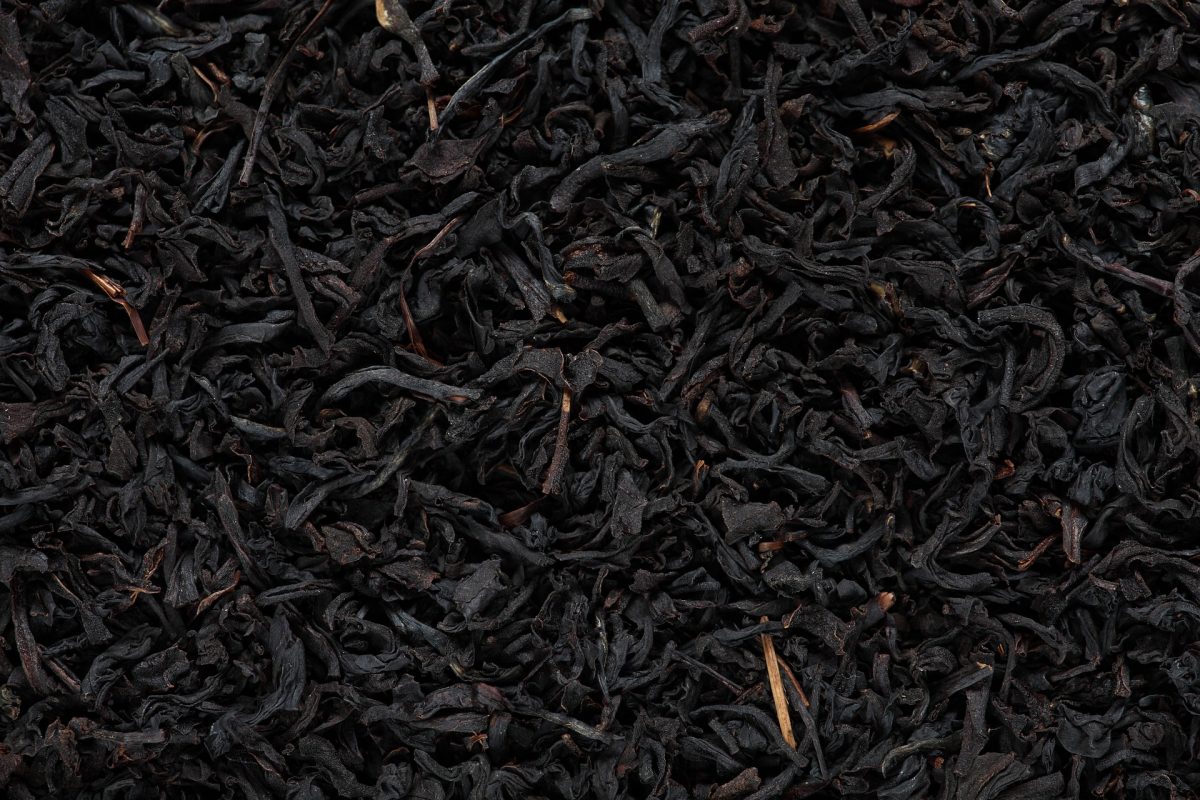
All these teas travelled along the Silk Road to different countries, people and continents
The Silk Road is the name given to a network of important trading and caravan routes which weave across the mountains and deserts linking China and the Far East, Central Asia, India, the Middle East and the Mediterranean.
The name, Silk Road, was first used by the German explorer Baron Ferdinand von Richthtofen in the 19th century. As the name suggests, silk was one of the most important commodities traded along this road.
The route weaves through the Taklamakan desert to Kashgar, Kashmir, Afghanistan, and on to the Mediterranean.
China
Our journey starts during the Tang Dynasty at the magnificent capital city of Chang’an (now called Xian) in northern China.
It was from Chang’an that the great trade caravans set out with their cargoes.
The goods were usually carried on the backs of camels, who were often referred to as ‘ships of the desert’. The caravans travelled long distances over high mountain passes and barren deserts.
In the early days of tea drinking in China, tea was often in compressed forms like tea bricks.
Compressed teas were usually made with dried and ground tea leaves that were pressed into various bricks or other shapes. Newly formed tea bricks were then left to cure, dry, and age prior to being sold or traded.
Tea bricks were preferred in trade prior to the 19th Century in Asia, because they were more compact than loose leaf tea and less susceptible to damage.
They could be sewn into yak skins to withstand knocks and bad weather.
The universality of brick tea led to its use as a form of currency for bartering. Some tea bricks were also mixed with binding agents such as flour, blood, or yak dung to better preserve their form so they could withstand physical use as currency.
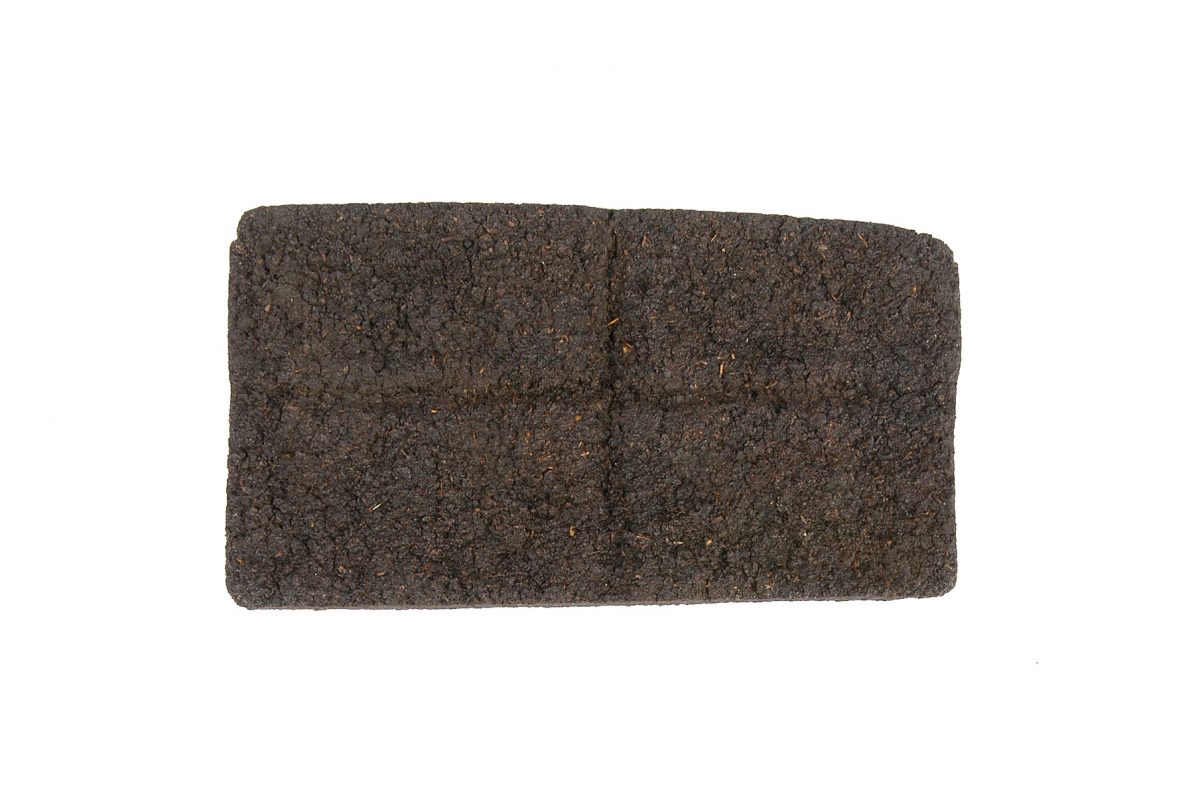
A description of how to infuse pressed tea is found in an extract from the Kuang Ya, a dictionary of c. 4th Century AD:
...the leaves were plucked and made into cakes in the district between the provinces of Hupeh and Szechwan; the cakes were roasted until reddish in colour, pounded into tiny pieces, and placed in a chinaware pot. Boiling water was then poured over them, after which onion, ginger, and orange were added.
Salt was also often added.
At this time tea was a bitter medicinal drink used as a remedy for various ailments including stomach problems, lethargy, and even bad eyesight.
Later on, during the Song dynasty (AD 960-1279), the rustic brick tea fell out of grace.
Tea became more delicately flavoured and connoisseurs ground tea leaves to a fine powder, added boiling water and whisked it to a froth.
Tea houses began to spring up in the big cities and tea drinking spread to the middle and working classes through the Zen Buddhists, many of whom belonged to the lower classes.
Tea drinking played a role in Zen religious ceremonies and many of the rituals and customs were adopted by the Japanese in their own tea ceremony. It also became a homely beverage, drunk daily and served to guests.
Tea drinking had a revival during the Ming Dynasty (1368-1644) after it declined during the Mogul conquest of China in 1280.
Fermented black tea became popular at this time and tea-ware also developed as an art form. Teapots were made in various shapes and today’s round teapot is based on one of the Ming designs.
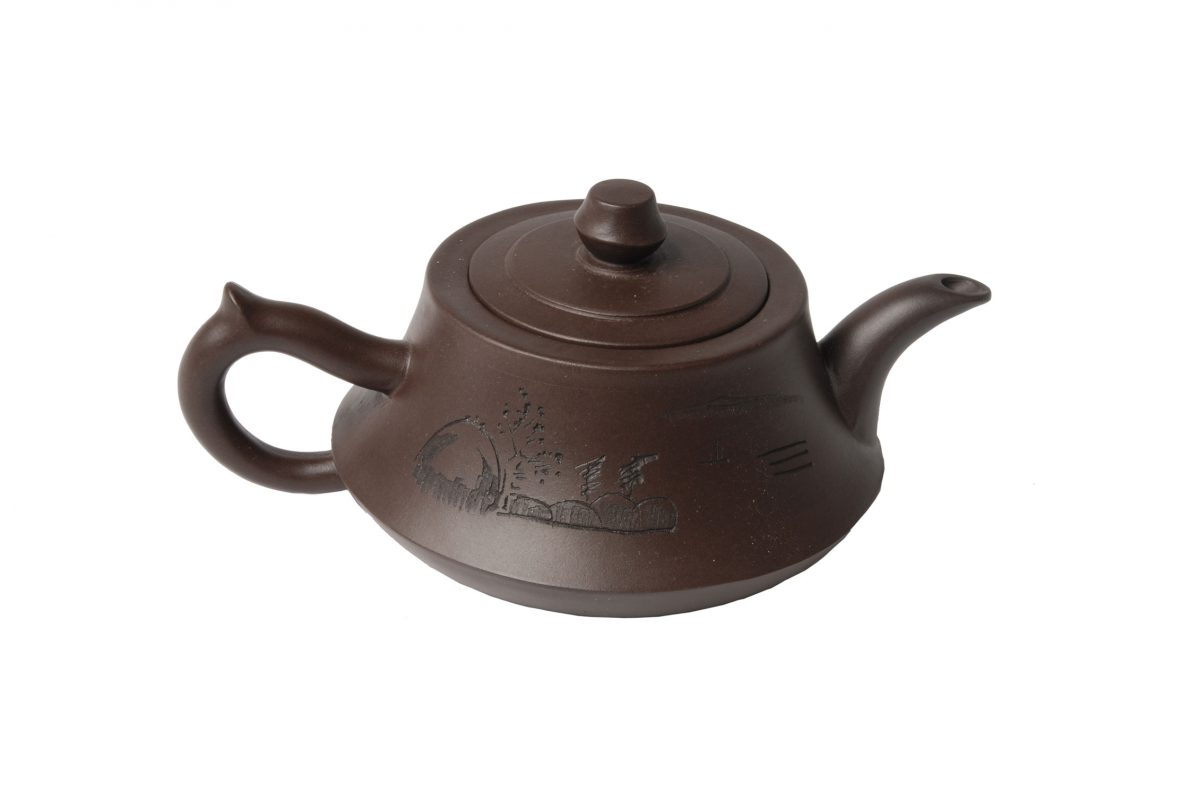
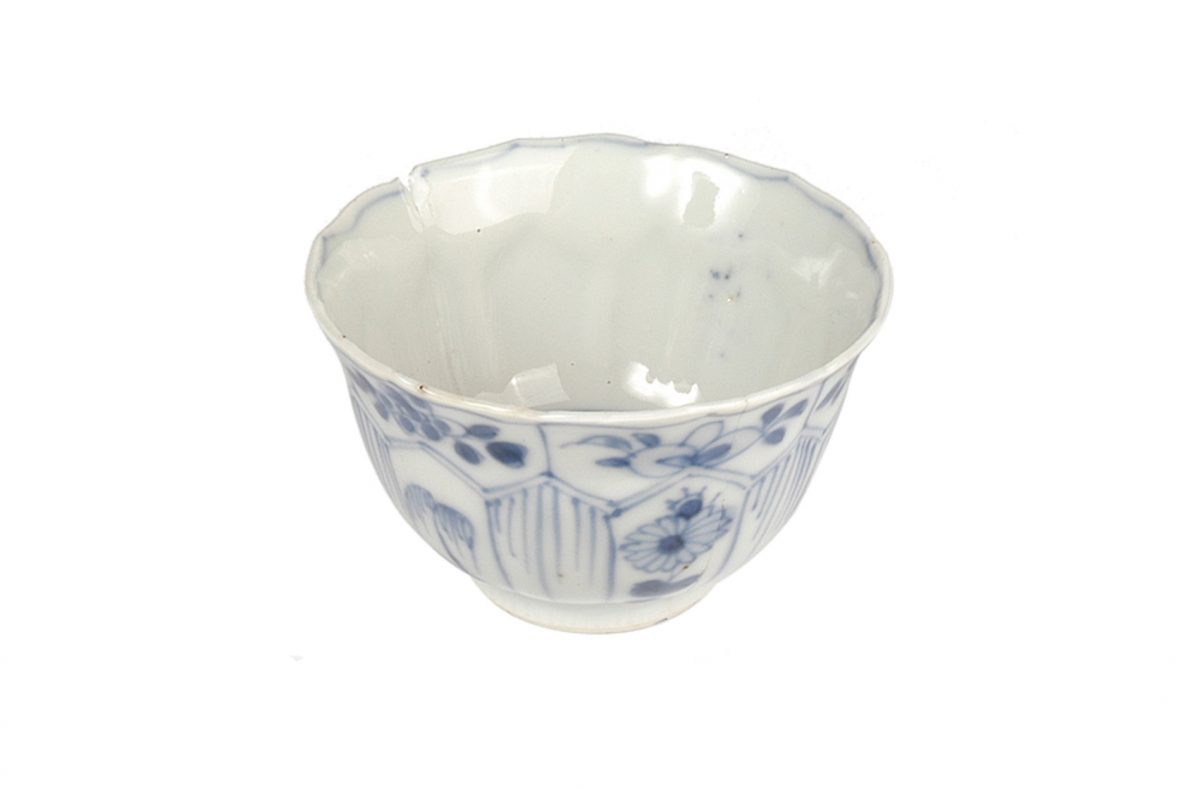
Tea became an important part of ordinary life in China. During the Tang Dynasty (618-907) it also became big business through trade.
Tibet
Tea came to Tibet from Yunnan in China; it is said that it was first introduced to Tibet in 641 AD as a result of a royal alliance.
Instead of adopting the Chinese way of tea drinking, Tibetans found other ways of preparing tea which not only provided warmth but also extra nutrition. The tea, called bo-jha or po cha, referred to in the west as butter tea, can be made in a number of ways.
Butter tea is usually made from a brick of tea. Chunks are broken off and toasted over a fire to destroy any infestation by molds or insects. The tea is then boiled in water for five to ten minutes until dark and strong, and then strained into a wooden or bamboo tea churn. Yak milk, yak butter and salt are added to the tea and the mixture churned vigorously with a stick.
For ceremonial rituals an elaborate and decorative teapot may be used. This magnificent one is made of copper forming the basic structure but it is decorated with silver which has some details picked out in gold gilding.
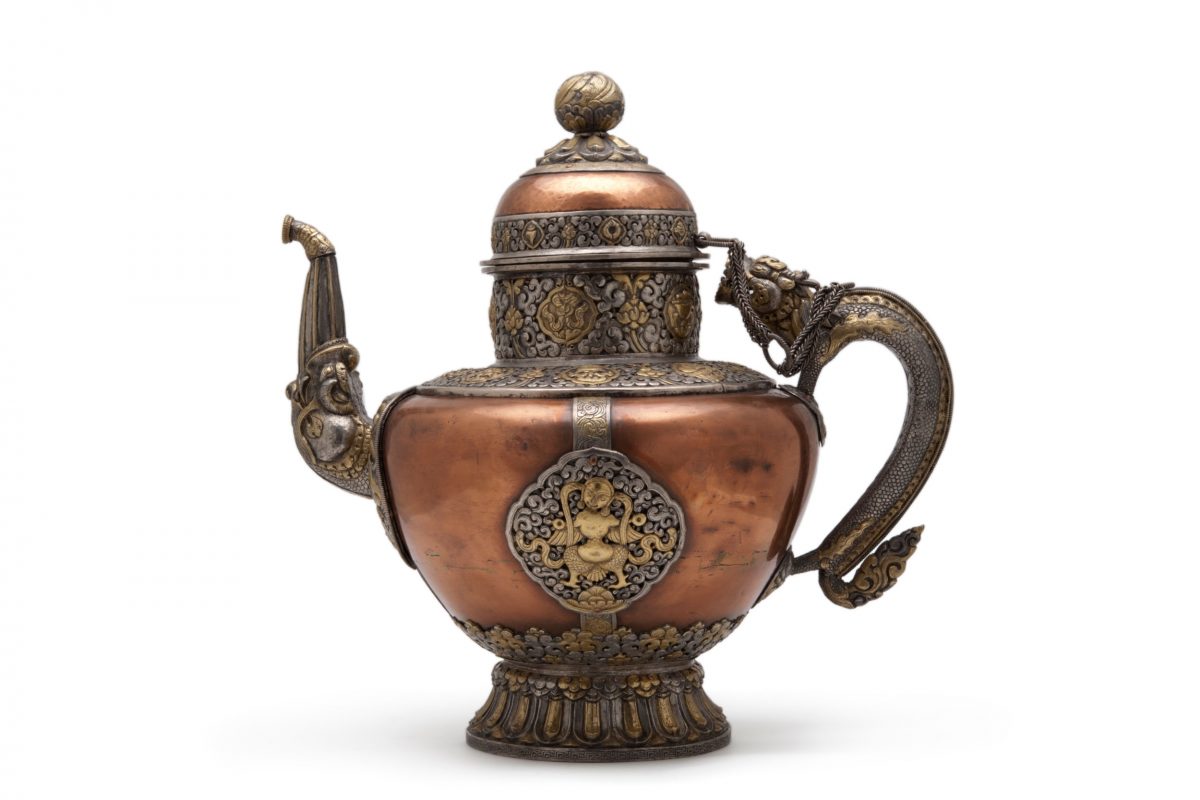
Kashmir
Tea travelled along the Silk Road from Tibet though to Kashmir in what is today India.
Tea is made in three different ways.
Kahwa is the favourite, and is often served on special occasions such as weddings and festivals. Kahwa, which is traditionally prepared in a samovar, is made by boiling green tea in water and adding cardamom, cinnamon, shredded almonds, saffron and sweetened with sugar or honey to taste. It is served in tiny, shallow cups called khos.
The second tea – Dabal chai is also made with green tea. Sugar, cardamom, almonds and milk are added. It is sometimes called bambay chay because it used to be imported via Bombay.
The third tea – Sheer chai, also known as gulabi chai (pink tea) – is made with a green or oolong tea. It is brewed over a fire and with the addition of salt, bicarbonate of soda and milk or cream makes a distinctly frothy and pink beverage. This tea is often served for breakfast.
Kashgar
Kashgar was a major junction and important trading centre along the Silk Road.
Merchants and travellers would stop here for a rest, trade and take in fresh supplies for continuing on their arduous journeys. Many would stay at a chaikhana (tea house) which, apart from serving tea, often provided accommodation and other basic needs.
Kashgar lies at the heart of the Uighur [‘we gur’] world. The Uighurs are an ancient Turkic people who settled along the Silk Road, especially in Xinjiang province, a long time ago.
They make tea in different ways.
It is drunk with salt and milk, with added cream, sour cream or butter. Black tea is often flavoured with cinnamon and served with sweets after a rich meal, while other Uighurs favour green tea.
Afganistan
From Kashgar there is a road south leading to northern Afghanistan over the high passes of the Pamir Mountains. Kirghiz nomads live in this region.
And for them, tea is a luxury:
…worth so much that each camel driver carries it about his person in a beautifully embroidered little bag, which is cautiously produced to put tea in the kettle.
Sugar is so precious that tea is drunk with salt not sugar, and salt is so scarce that it is only used in tea.
The road leads down onto the plains and to the ancient city of Balkh which was a very important trading city of the Silk Road.
In Afghanistan, a similar tea to the sheer chai of Kashmir is made but sugar is usually added, not salt.
For special occasions, such as weddings and engagements, an even more elaborate tea is made called qymaq chai. This is also made with green tea, but turns dark red with the addition of bicarbonate of soda and the process of aeration (pouring the tea from a height from a pan to another pan several times). Milk is added and it becomes a pinkish colour. It is sweetened with sugar and flavoured with cardamom.
It has a strong, rich taste. Qymaq, a sort of clotted cream similar to the kaymak of the Middle East is floated on top of the tea.
Both green and black tea are popular for everyday drinking (usually without milk but often flavoured with cardamom).
It is drunk from small porcelain cups or bowls or glasses called istekhan. Very often the custom is to drink the first cup or glass of tea with sugar (chai shireen), continually topping up with more tea, until the last cup is not sweet at all (chai talkh). For guests, an enormous amount of sugar is usually added – the more sugar, the more honour, and sweets are often an accompaniment including sugared almonds called noql.
Three cups and teahouses
Many of the regions along the Silk Road share tea drinking customs and traditions.
Tea is drunk copiously throughout the day and plays an essential role in hospitality and business dealings. In many places, tea is served with sugar lumps, which are placed on the tongue and the tea is sucked through them, often noisily!
A popular tradition is the drinking of three cups of tea.
Greg Mortenson’s bestselling book Three Cups of Tea (2006) quotes Haji Ali, a chief of a remote village in the mountains of northern Pakistan:
Here we drink three cups of tea to do business; the first you are a stranger, the second you become a friend, and the third, you join our family, and for our family we are prepared to do anything – even die.
A different meaning has been given by Louis Dupree in his encyclopaedic work Afghanistan (1973):
...the first cup assuages thirst, the second pledges friendship, the third is simply ostentatious.
The same tradition, but with various other meanings, is found in Morocco and other regions of North Africa.
Chaikhana (tea houses) remain an important part of life in many countries along the Silk Road.
The tea is usually served from a constantly boiling samovar into individual teapots for each customer.
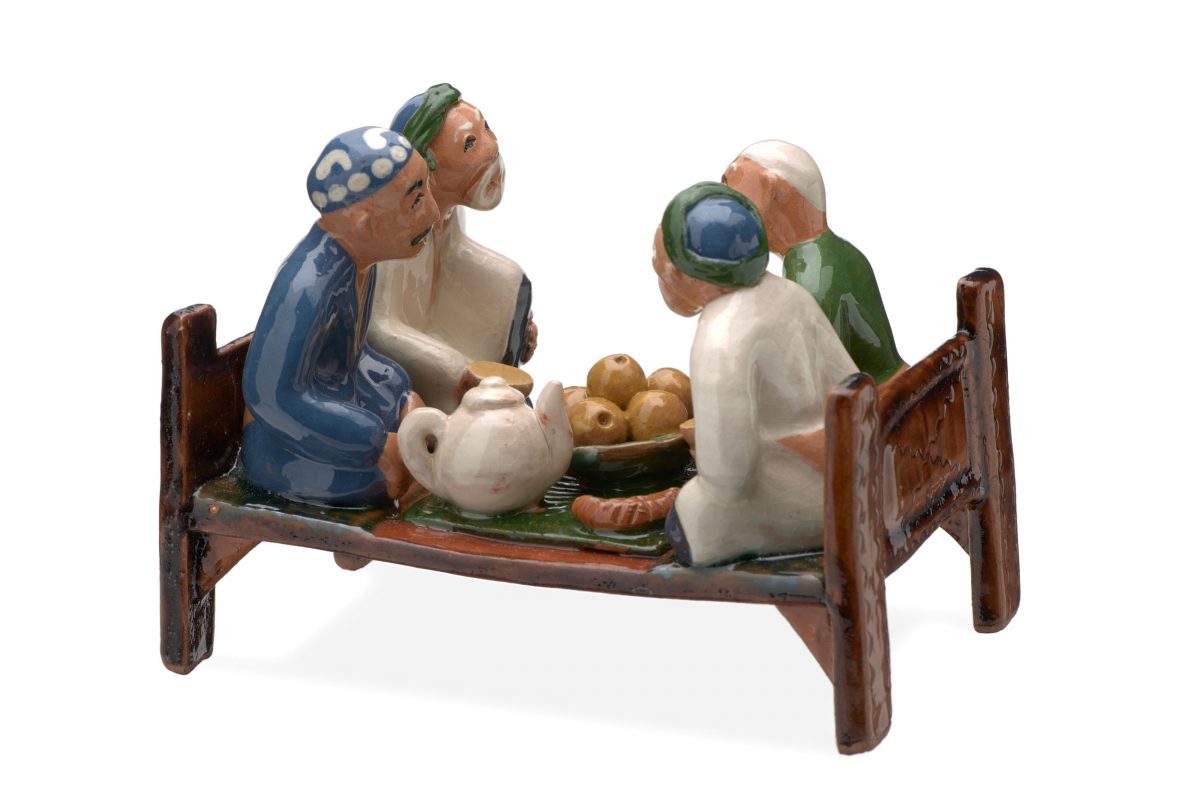
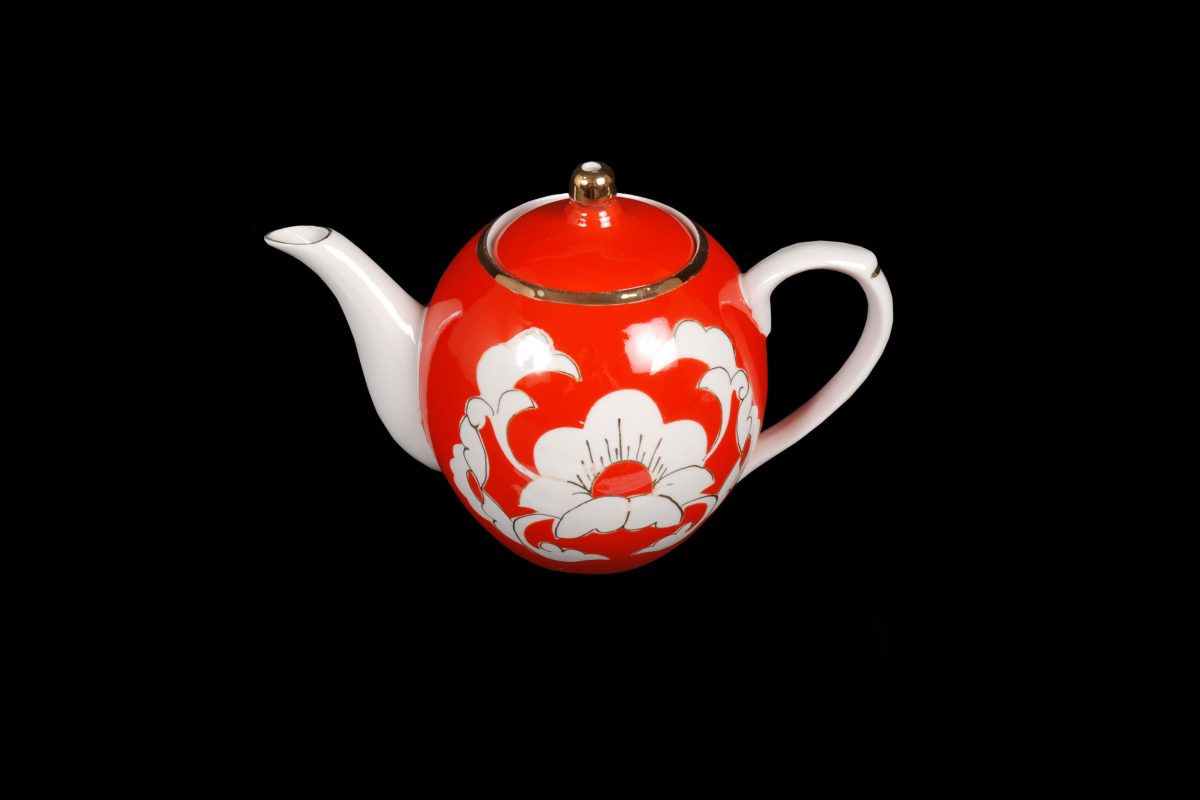
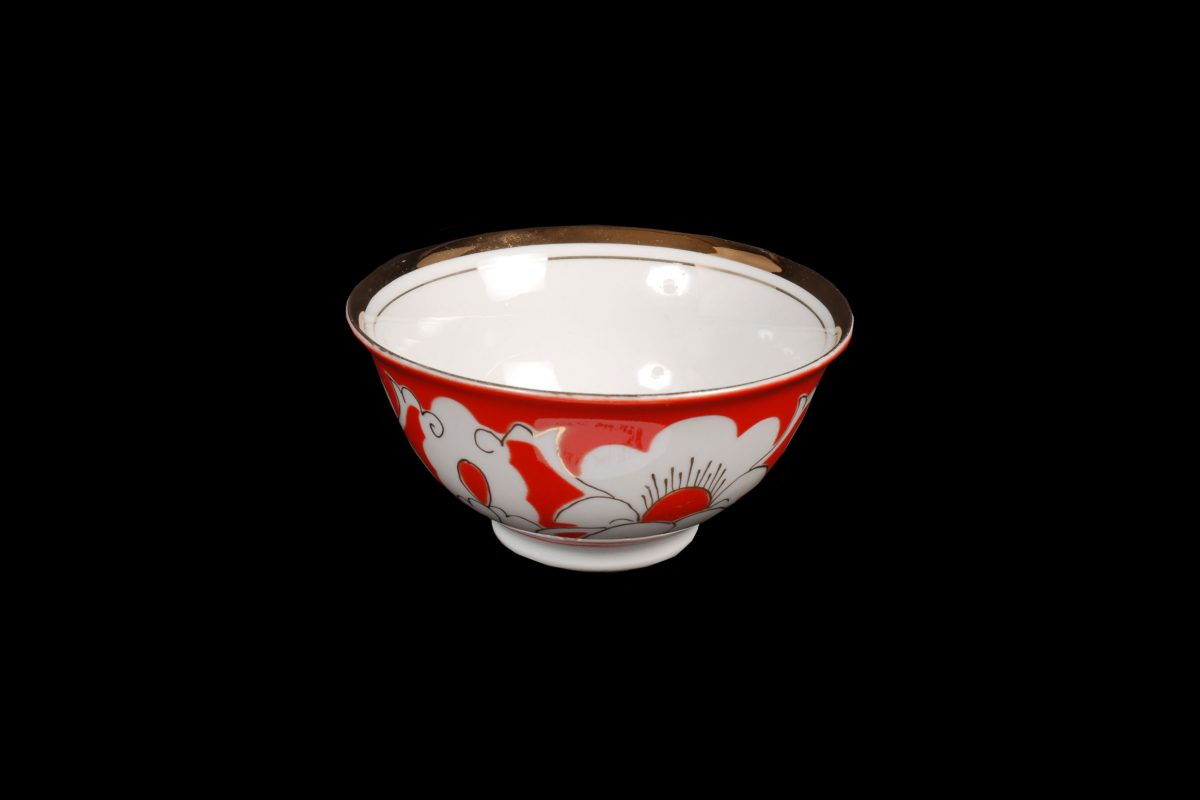
The chaikhana also plays an important role in Uzbekistan. This ornament was bought in Fergana, Uzbekistan, in the 1990s and shows four men drinking tea in a tea house. Objects such as this are made for tourists as a memento of the famous chaikhana.
The teapot and the cup are part of a beautiful porcelain tea service from Tashkent in Uzbekistan, collected by a Horniman curator during fieldwork.
Iran
In the 1920s, the former Shah of Iran’s father became suspicious that coffee houses were fostering political dissent. He decided to persuade people to switch to tea drinking.
He imported new strains of tea from China and recruited Chinese families to oversee and upgrade tea production in Iran. His efforts were successful and tea became the most popular beverage.
Tea is grown around the Caspian Sea area, but it is expensive and not enough is produced to satisfy the demand so much of the tea is imported.
Today, tea in Iran usually drunk out of glasses called istekhan. For formal entertaining, Iranians sometimes flavor their tea with cinnamon or garnish it with crushed rose petals.
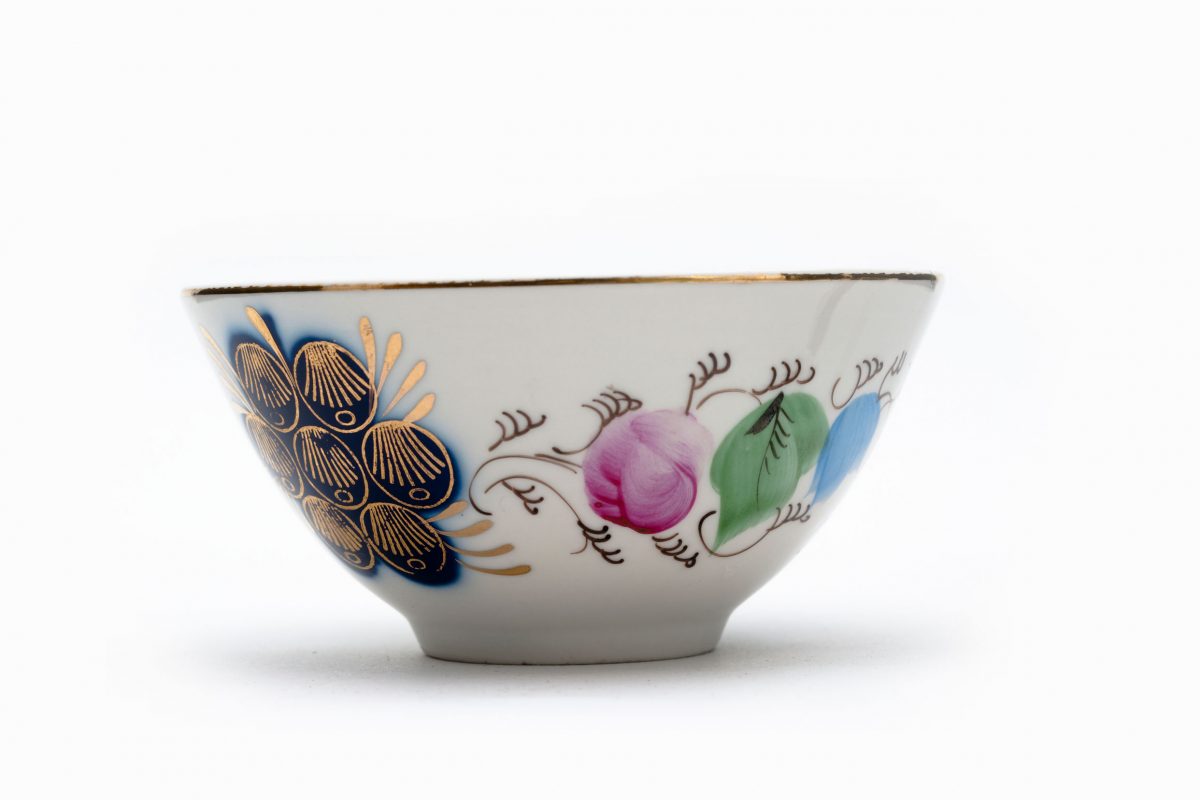
Turkey
The last stage of the Silk Road leads to Turkey.
The northern route goes to Tabriz and on to Trebizond (now Trabzon), and on to Istanbul.
It is thought that originally tea was brought to Anatolia as early as the twelfth century. The earliest mention of tea in Turkish literature is from the famous travel writer Evliya Çelebi. In 1631 he describes servants offering tea, along with coffee from Yemen, to officials of the Ottoman Empire at the Istanbul Custom Offices.
Tea played an important role in the daily life of Ottoman Turks, served in private homes and in public places: tea rooms and tea houses blossomed.
Sultan Abdulhamid II (1876-1909), although a coffee addict, showed a keen interest in tea.
Experiments in planting saplings and seeds were conducted in various parts of the Ottoman Empire. The eastern Black Sea coastal area, which has a mild climate, high rainfall and fertile soil, proved to be ideal for growing tea.
Atatürk, the founder of the Turkish Republic, encouraged home-grown tea as an alternative to imported coffee, which had become expensive and at times unavailable in the aftermath of World War I.
Tea is often brewed in a samovar or a tea-kettle called a çaydanlık. Water is boiled and poured over tea leaves in a demlik (a type of teapot) and then left to brew. The tea can be served light or strong according to taste.
A little tea is poured from the demlik usually into tulip-shaped glasses called ince belli, and then diluted according to the desired strength with boiling water from the tea kettle. The tea is often sweetened with sugar and sometimes served with a thin slice of lemon, but never with milk.
In the past and very much today pipe smoking is a popular accompaniment to tea drinking in Turkey.
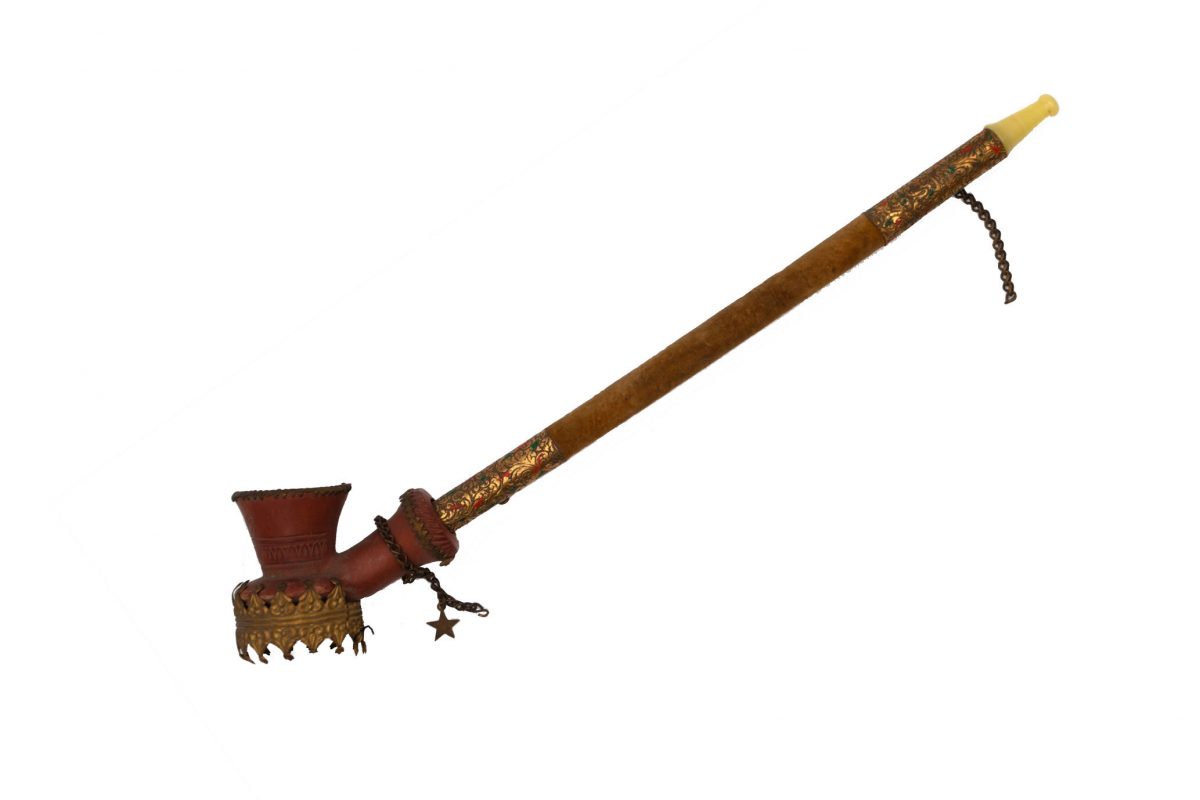
Horniman Tea
By the end of the 19th century, Horniman Tea had become one of the world’s largest tea trading companies. Its history tells us a lot about the ways in which the tea trade between East and West was often politicised, particularly in the 19th century.
When John Horniman set up a small business on the Isle of Wight in 1826, he came up with an innovative idea to package tea in individual bags. At this time tea was sold loose from tea chests and could easily be adulterated, so he started packing the tea into sealed and labelled paper packets with a guaranteed net weight.
Apart from keeping the tea leaves fresh, this strategy proved successful because it was able to play off popular anti-Chinese sentiment following the Opium Wars. The introduction of free trade following the First Opium War in 1842 led to fears that Chinese tea planters were adulterating their tea, which was then being sold to working-class Britons by unscrupulous traders.
These fears often stemmed from racist stereotypes of Chinese people as lazy and dishonest. Horniman Tea reproduced these stereotypes in advertising campaigns in the 1840s and 1850s that played into fears of foreign invasion, and assured consumers that their pre-packaging ensured a pure tea.
Evoking popular anti-Chinese sentiment in advertising campaigns meant that the business went from strength to strength until Lyons bought the firm in 1918.
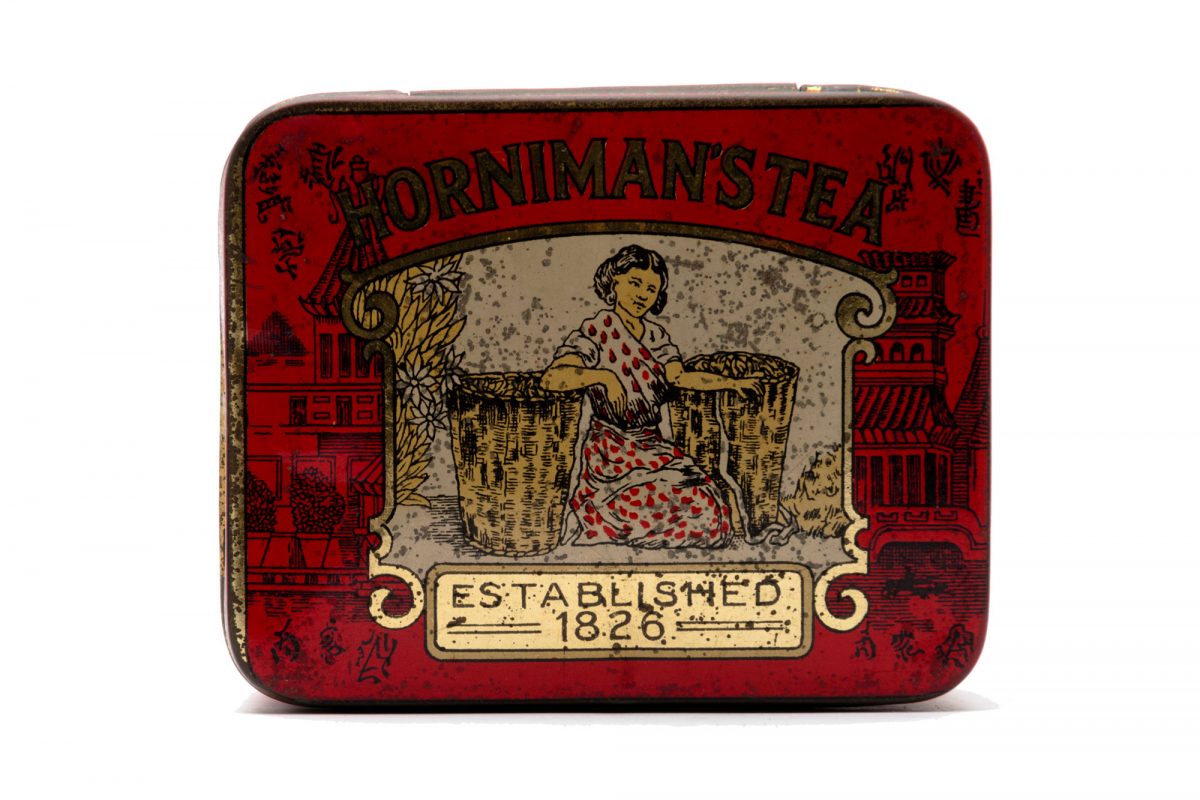
Extra words by Nathalie Cooper


